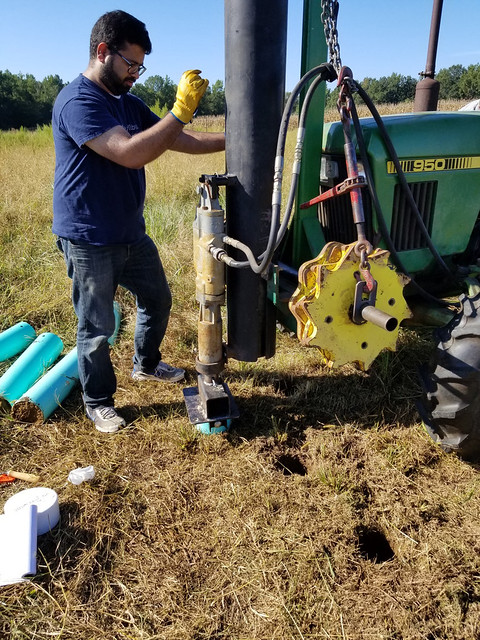



New research sheds light on using poultry litter as fertiliser and soil health
While poultry manure has served as a convenient and inexpensive fertiliser source for many farmers, little is known about where those nutrients, minerals and metals go once they pass through the soil.Of special interest to a group of Auburn University researchers is the destination of heavy metals in the manure, including zinc, copper and lead.
“The goal of our research project is to improve our understanding of how heavy metal losses occur in the subsurface flows of the agricultural landscape and what farmers can do to prevent it,” said Jasmeet Lamba, assistant professor in the College of Agriculture’s Department of Biosystems Engineering.
The $500,000 project led by Lamba is funded by USDA-National Institute of Food and Agriculture under Sustainable Agroecosystems: Health, Functions, Processes and Management. In addition to Lamba, other members of the research team include Rishi Prasad from the Department of Crop, Soil and Environmental Sciences, Thomas R Way from the USDA-National Soil Dynamics Laboratory and Jirka Šimunek from the University of California, Riverside.

Poultry in Alabama generates more than $15 billion in revenue each year—almost 66 percent of annual farming revenue in the state. Along with this sizeable production comes about 1.8 million tons of waste, or litter, annually, part of which is used by farmers to fertilise their fields.
“Poultry litter generated from Alabama production facilities is a rich source of nutrients—including phosphorus and nitrogen—for crops,” Lamba said. “In addition to macronutrients, poultry litter can also contain appreciable quantities of heavy metals, such as zinc, copper and lead.”
Previous research has explored the fate and transport processes of nutrients in agricultural fields. However, studies focused on explaining heavy metal migration in agricultural soils are limited.
“The repeated application of poultry litter to the same agricultural fields has resulted in the buildup of heavy metals and other contaminants in soils,” Lamba said. “Our previous research has shown that the loss of heavy metals via subsurface flow pathways could be significant in the Sand Mountain region of north Alabama, where less than 10 percent of the rainfall was found to contribute to surface runoff.”
The proposed research project, he said, will use field data collection, laboratory experiments and modelling to determine the loss of heavy metals in leachate from agricultural fields. A leachate, he explained, is a liquid that is generated as a result of the percolation of water or liquid through the soil and could contain contaminants in the solution.
“We will also investigate the impact of soil pore characteristics on heavy metal loss,” Lamba said. “This research will help quantify the effect of soil characteristics that influence heavy metal losses from agricultural landscapes, help refine and validate hydrological models and aid in the development of management practices.”
The types of recommended management practices will depend upon the results of the study, he said. “If the loss of heavy metals via subsurface flow is substantial, we might have to look into some innovative management practices which can prevent losses via subsurface flows. Depending on the dominant form of heavy metal loss, management practices can vary.”
A collaborator at the University of California-Riverside will use the HYDRUS model to simulate water and contaminant transport processes through soils.
(Written by Paul Hollis, Auburn University)









